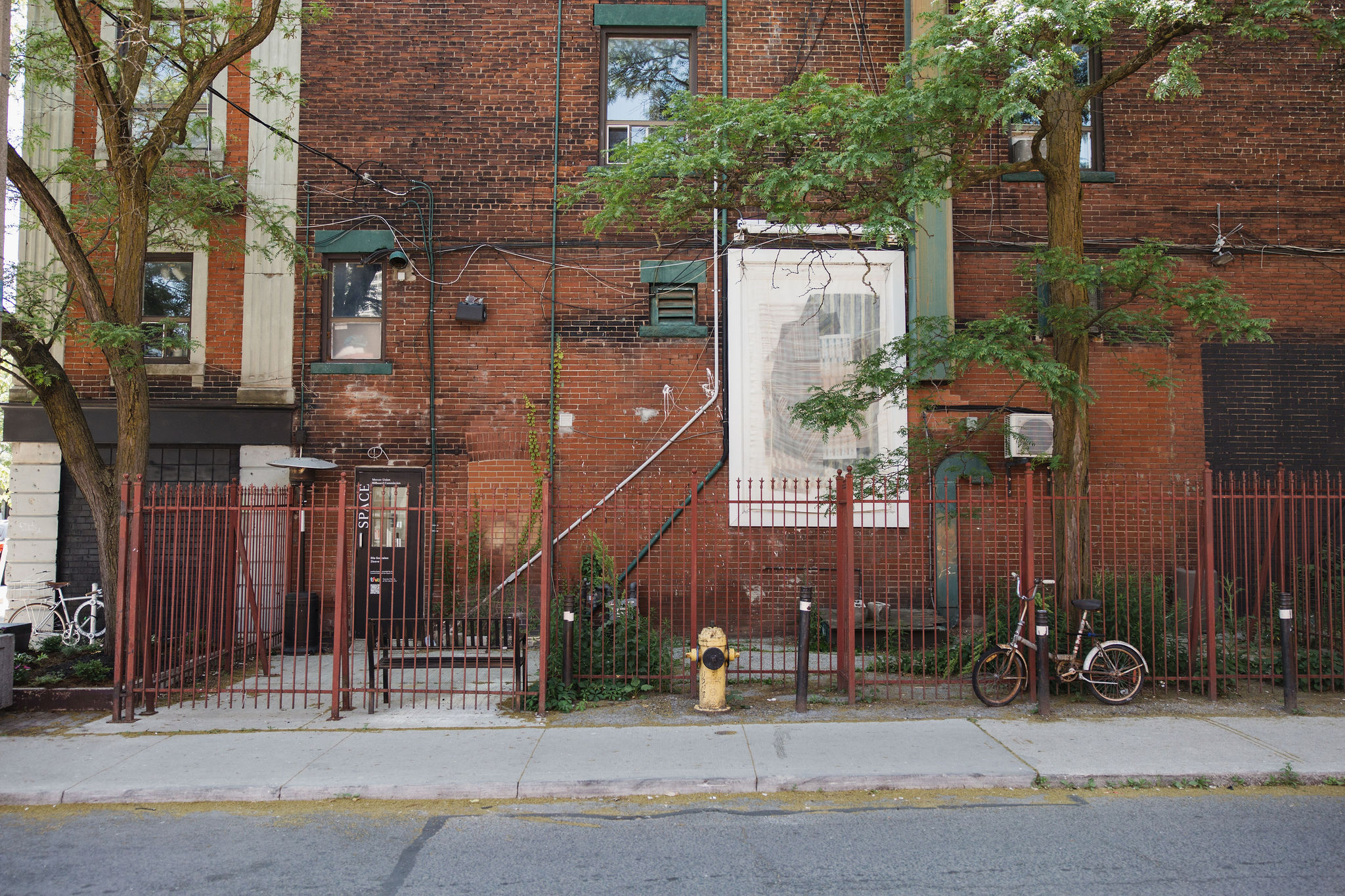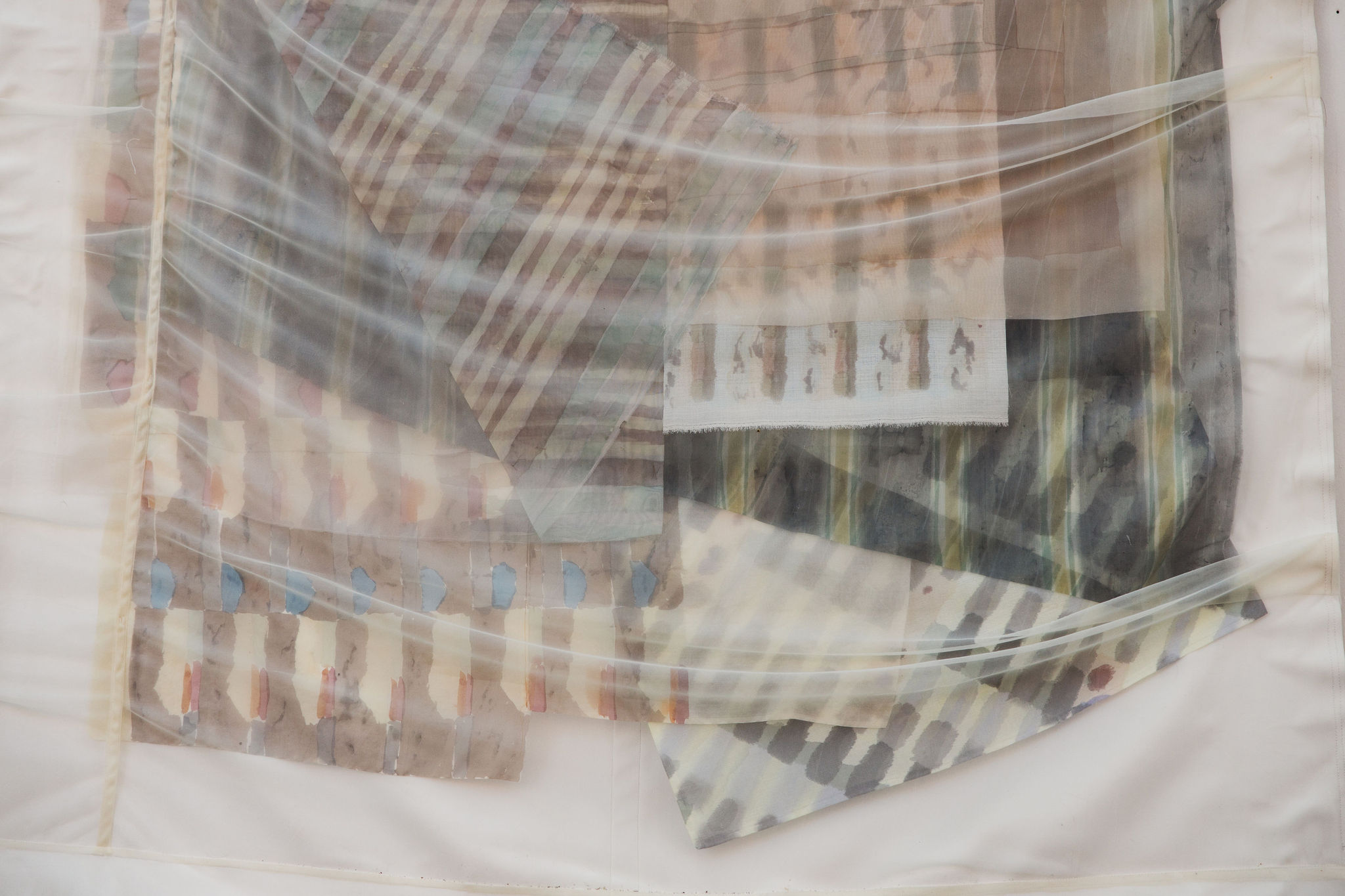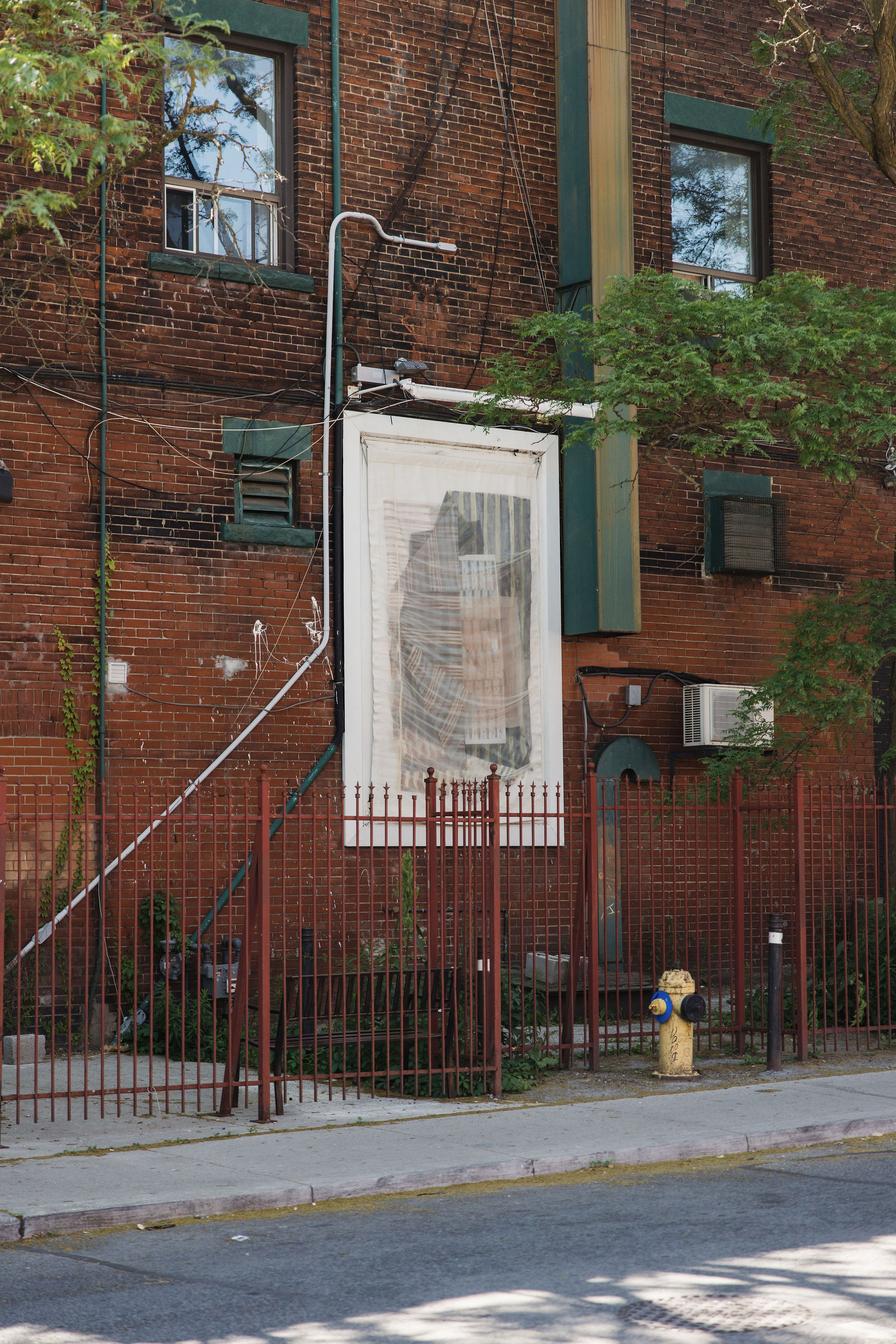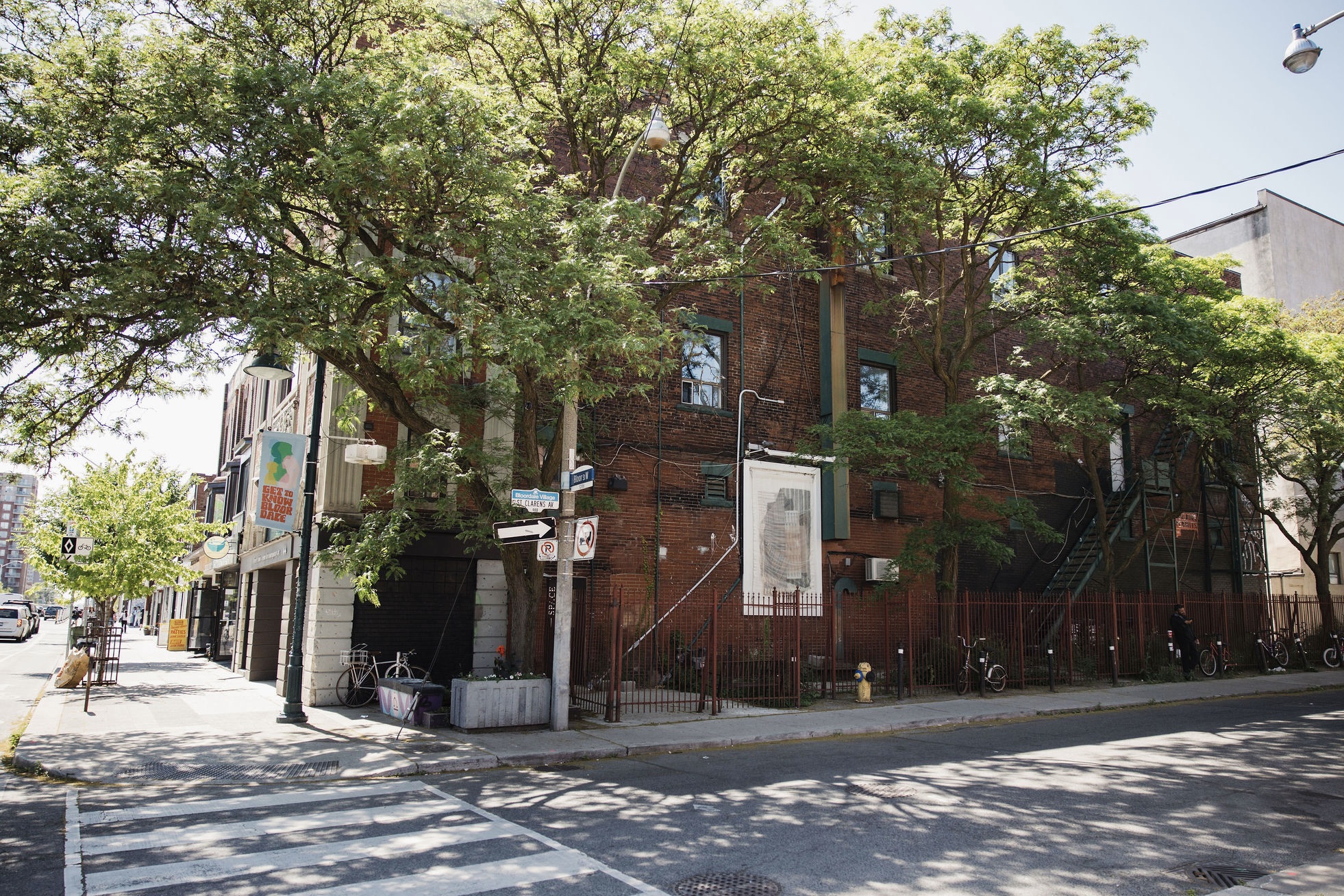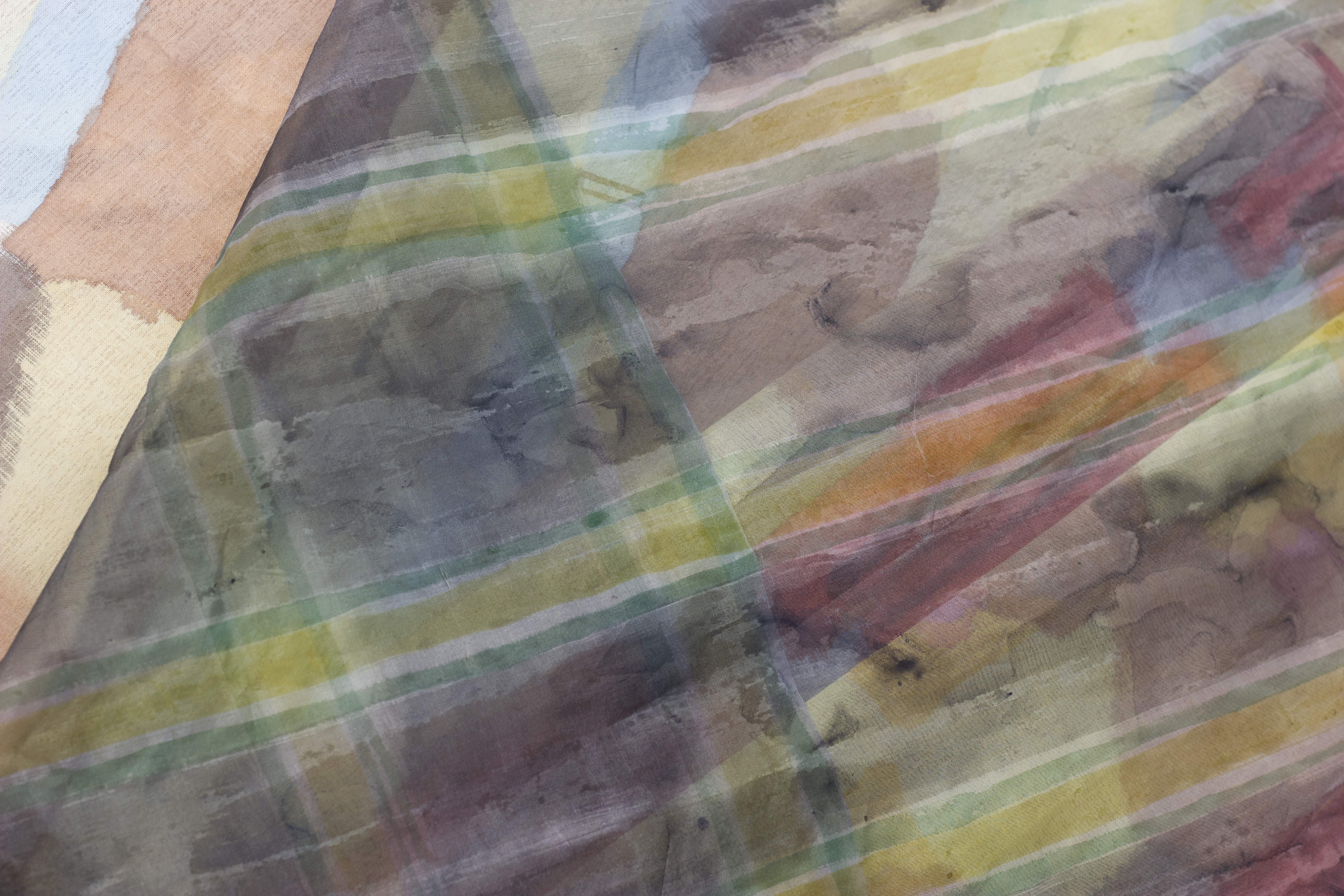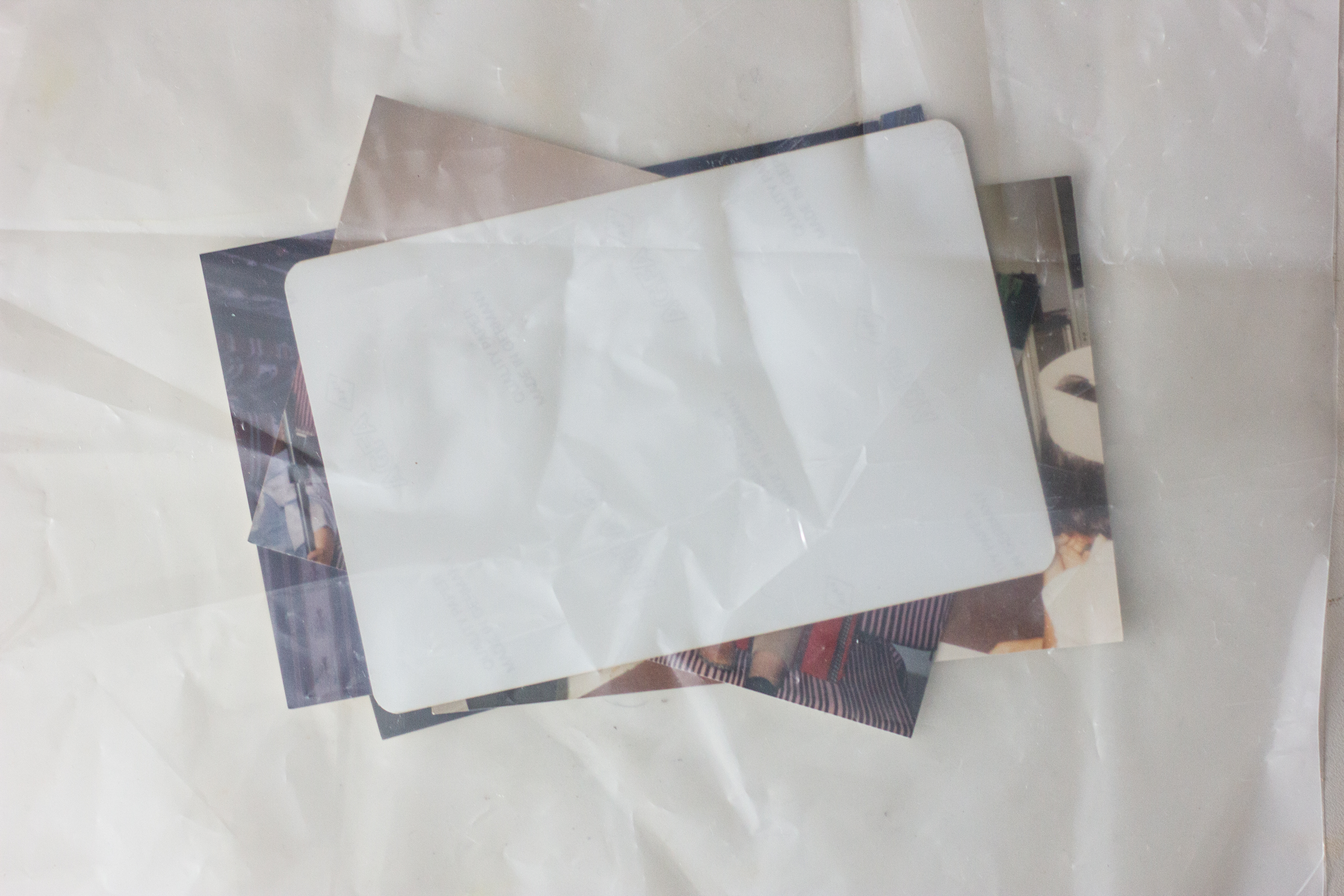SPACE invites one artist to produce a yearlong series of images for a public-facing billboard located on the east façade of Mercer Union.
Mercer Union’s SPACE billboard commission has invited artist Ella Gonzales for its 2024–25 season for a yearlong series titled, Sleeve. Gonzales, whose practice engages the endless depth yet impenetrable border of the picture plane, is a painter with a style for soft pigment washes and hard-edged geometries that soothe the eye as much as they tease the mind. The conceptual and technical interests of her works, be they wall-bound or sculptural, are twined in a deeply personal study of migration and diaspora.
Her intuitive and expertly drafted x-rays of built structures invite a dreamlike navigation of spaces, places, and times that remain inconsumable, just slightly out of reach. To these pictorial volumes, Gonzales often adds dimension by using layers, opacities, creases, and folds as an infinitely variable language for orienting to her subject. At Mercer Union, her paintings engage a new form, introducing materials like vinyl and polyethylene as companion surfaces that hold, protect, obscure, and disrupt the composition. Over the course of one year, Sleeve plays with the billboard site by iterating gestures within a single shell. Collapsed organza, Piña and Jusi silks painted with acrylics appear and accumulate, in a slow reveal of three sculptural banners or perhaps, three distinct moments in a single work always in the process of becoming.
Sleeve: as that surface fluctuates is the third edition in the yearlong series, accompanying the work is a text by Casey Mecija.
Sleeve: as that surface fluctuates
I biked down Lansdowne Avenue to meet Ella Gonzales at her studio. I arrived a little earlier than expected and decided to sit outside a nearby coffee shop. I had just enough time to write an email to a colleague about how, in their recent master’s course, I felt they offered much-needed support and encouragement to an incoming student. Before I could hit send, Ella stepped out of a door, and we quickly exchanged smiles. We decided to continue sitting outside that coffee shop and ease into conversation. That afternoon, she was set to teach a second-year painting course at the University of Toronto and was acclimating to a new group of students. I recently completed my winter term of teaching at York University, and our discussion shifted to sharing strategies for teaching students who, from class to class, have varying levels of engagement. Lately, I’ve been thinking a lot about pedagogy and the contradictions of education as a conduit for possibility and opportunity within the neoliberal institution. How much should we care about our roles as teachers? How much do students care about us? How can art engage students in ways that we often cannot? Teaching, to borrow from Ella, is a surface that fluctuates.
The name for Ella’s third billboard edition of Sleeve is pulled from a poetic essay by Lisa Robertson on the history of scaffolding. Robertson describes scaffolding as:
“a filter of exchange and inscription that localizes and differentiates the huge vibratory currents swathing the earth. It rhythmically expresses the vulnerability of the surface by subtracting solidity from form to make something temporarily animate. It shows us how to inhabit a surface as that surface fluctuates.”¹
As it is made to be assembled and disassembled, the scaffold thrives in its planned ephemerality. With a design that collapses upon the very structure it becomes, it is precisely the scaffold’s inherent gaps and negative space that make another structure, such as a brick wall, possible. Yet, these same qualities also enable scaffolds to be used for destruction. The scaffold witnesses the surface in flux, and when read within the context of the city, can symbolize its ongoing urban gentrification.
Robertson’s essay is part of a book titled Occasional Work and Seven Walks from the Office for Soft Architecture, in which she lyrically documents over a decade of Vancouver’s urban transformation. In the book’s acknowledgements, Robertson expands on her methodological approach: “In writing, I wanted to make alternative spaces and contexts for the visual culture of this city, sites that could also provide a vigorously idiosyncratic history of surfaces as they fluctuate.” Ella’s billboard contributes to the history of Toronto as the city unfolds in perpetuity. While Toronto is in flux, Sleeve, for the time being, is firmly situated. The piece is affixed to a frame mounted outside on a brick wall of the Mercer Union building at Bloor Street West and St. Clarens Avenue.
Ella shares with me that she aims to create work that is “constantly collapsing,” an example of which is her attempt to play with the spatial constraints of the formal picture plane. Nestor describes the artist as a “layerer.”² Layers constitute the vital, conceptual, and material substance that gives the work a multidimensional quality. Ella applies acrylic to pĩna silks and uses painting techniques such as layering opaque colours to create spaces with endless depth. For this final billboard, three silk paintings are added on top of Sleeve’s previous iterations. With each additional layer, the canvas expands in depth. Its final layer and container, a soft mesh netting, is light and billows with the city's currents. The textiles yield to their environment, and their movements test the territorial imagination of the frame. The layers draw us in, in, in, in, in… this folding of perspectives blurs the boundaries between the interior and the exterior, the psyche and sociality.
As viewers, we are invited in and out of the frame. It’s hard not to notice that the installation site and its surroundings are dense with detail. The thickness of the scene enables the frame to serve as a doorway to noticing a localized plurality. For me, the billboard orients attention to what Dionne Brand poignantly describes as Toronto’s “polyphonic murmuring.”³ The surface can be transparent while simultaneously holding suspended vibrance and decay. This is the scaffold of all that was, will be, and might be remembered.
A tattered blue tarp billows out on the sidewalk next to Ella’s work. It covers a mound of concealed items and is weighted down by packed reusable shopping bags. Cardboard boxes, plastic bags, blankets of varying thickness, and a collection of empty Tim Horton’s paper cups surround the perimeter. This is not just a disposal site for refuse; these items are belongings. What does it mean for Ella’s art to billow alongside a tarp that covers or claims space for the objects of someone who is presumably unhoused? The surfaces of Toronto and its neighbourhoods fluctuate with the flows of capital, and these currents facilitate both development and profound displacement. Estimates suggest that over 12,000 individuals in the city are currently unhoused.⁴
For many, the allure of neoliberalism obscures or restrains desires to care for those who are vulnerable. For others, the accumulation of capital is a greed never satiated. Ella shared with me that one of the previous iterations of her billboard had been tampered with; someone had scaled the red wrought-iron fence around Mercer Union and written the name “Ben” in ballpoint pen on the work. When art lives outside in a city like Toronto, does it become subject to co-authorship? Is art accountable to its neighbours? What truths about the city does the surface conceal?
Art, I think, bears pedagogical responsibilities and cannot turn away from a world in collapse. I was compelled by Heather’s invocation of a letter and its envelope as an entry point into discussing Ella’s second billboard edition.⁵ The structure of the envelope resonates with me, and I extend its meaning into an invitation to consider how we unevenly, but collectively, share a violent world. Ella’s work reflects these considerations and has, for me, been a meaningful teacher.
— Casey Mecija
Ella Gonzales welcomes us into her studio, to share the ideas and process behind her three-part SPACE Billboard Commission: Sleeve (2024-2025).
